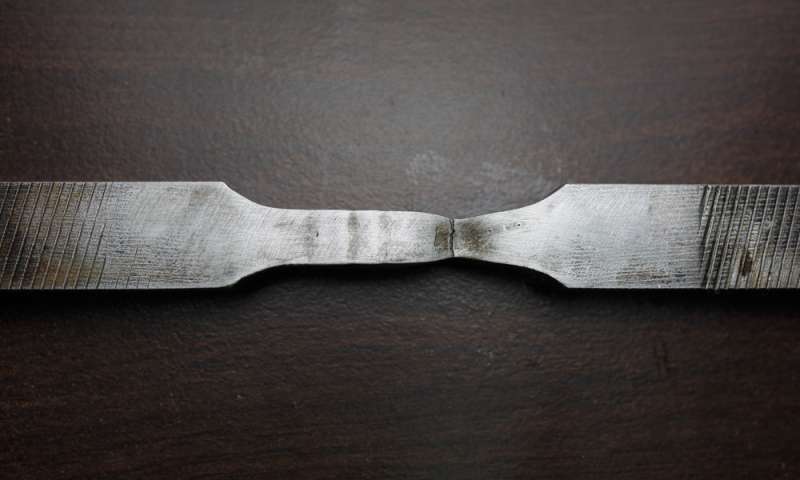Example of fragmentation at metallic materials. Credit: UC3M
Scientists have analyzed the mechanisms behind the dynamic fragmentation of ductile metallic materials that exhibit large permanent deformations when subjected to severe mechanical loading. Previously, it was thought that dynamic fragmentation was triggered by the inherent defects of the material. What this research suggests is that the key mechanism may not be the porosity of the metallic material, but inertia effects.
One of the authors of the study, Komi Espoir N"Souglo, says, "We have developed a simple analytical model to shed light into the mechanisms which control dynamic fragmentation in porous metals used in the aerospace industry and the civilian-security sector."
Co-author José Antonio Rodríguez from the Department of Continuum Mechanics and Structural Analysis says, "This work provides a new approach for analyzing and designing structures for which it is important to predict and control the size of the fragments that form when a metallic material fractures under impact loading." The paper was published in the journal Proceedings of the Royal Society A.
Possible applications
The identification of the mechanisms controlling dynamic fragmentation of a protective structural material will lead to the optimization of manufacturing processes, reducing costs and improving the quality of the final products. For example, protective structures of industrial facilities such as nuclear power plants need to withstand extreme mechanical loads such as explosions and impacts without fragmenting, thus maintaining their load-carrying capacity. "This knowledge can also be applied in the design of structures that can easily be fragmented, as in the case of space debris that sometimes falls to the earth's surface. In this case, the aim is that during atmospheric re-entry, the space debris will be fragmented so that the structures that eventually reach the Earth's surface are not of a large size," the researchers explain.
More information: K. E. N'souglo et al, Random distributions of initial porosity trigger regular necking patterns at high strain rates, Proceedings of the Royal Society A: Mathematical, Physical and Engineering Science (2018). DOI: 10.1098/rspa.2017.0575
Journal information: Proceedings of the Royal Society A
Provided by Carlos III University of Madrid
























